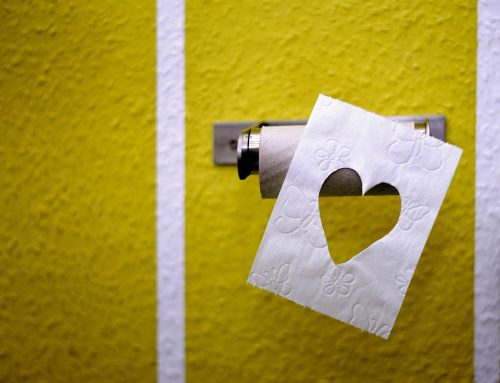A modern WC az emberiség egyik legnagyobb találmánya, amely számtalan egészségügyi problémára jelent megoldást. Ha belegondolunk, kevés az olyan hasznos szerkezet a világban, amelyre kivétel nélkül mindenkinek szüksége van.
Ennek ellenére napjainkban is több millióra tehető azok száma, akik nem rendelkeznek WC-vel, így a szükségüket kénytelenek kevésbé higiénikus körülmények között elvégezni. Ebben a cikkünkben bemutatjuk, milyen módon változtak az illemhelyek az évezredek során és rávilágítunk a XI. század égető gondjaira is.
Egy kis WC történelem
A higiénia megoldása mindig is nagy problémákat okozott a történelemben. Az első emberek még ott végezték dolgukat, ahol éppen rájuk tört az inger. Állandó lakóhely hiányában értelemszerűen nem voltak megfelelő illemhelyek sem. Az első próbálkozásokat a letelepedett életmóddal járó szagok hívták életre.
A régészeti leletek tanúsága szerint az ókori Mezopotámiában már léteztek olyan árnyékszékhez hasonló építmények, amelyek az ürüléket a csatornán keresztül az öntözőművekbe, onnan pedig a termőföldekre vezették.
A Római korban nyilvános latrinák szolgálták a népet, ahol nedves szivacsok töltötték be a toilet papír szerepét. A középkori szokásokat valószínűleg mindnyájan jól ismerjük. A polgárok az éjjeliedényük tartalmát egyszerűen az utcára löttyintették.
A ma használatos angol toilet-t a 16. században Sir John Harington fejlesztette ki. A water closet annyira elnyerte Erzsébet királynő tetszését, hogy nyomban be is szereltette a palotájába. A szélesebb körű elterjedéséig azonban még sokáig várni kellett.
Mit jelent a WC Világnapja és mi a szerepe?
A Toalett Világszervezet, amelynek ázsiai gyökerei vannak, első ízben 2001-ben szervezte meg a WC Világnapját. Az ENSZ 2013-ban nemzetközi kampányokat szervezett köré, és felkarolta az eseményt. A Világnap célja felhívni a figyelmet a Föld bizonyos tájain kialakult borzalmas higiéniás viszonyokra és a toalettek hiányára.
Bár első olvasásra, nem tűnhet súlyosnak a helyzet, a nem megfelelő tisztasági körülmények mégis milliók életét veszélyeztetik. 2017-ben az Egészségügyi Világszervezet a UNICEF-fel közösen készített egy jelentést a világban eluralkodó higiéniai válságról. A dokumentumban tanúságos adatokat közöltek.
-
A 7 milliárd emberből közel 4,5 milliárdan nem rendelkeznek saját WC-vel.
-
A Földön 862 millió embernek esélye sincs napi szinten WC közelébe jutni.
-
A világ teljes lakosságából 1.8 milliárdan szennyvízzel szennyezett ivóvizet kénytelenek fogyasztani.
-
A feltételezések szerint a rossz egészségügyi körülmények miatt évente több százezer ember veszíti életét. Egyes adatokban az szerepel, hogy minden huszadik másodpercben meghal valaki.
-
A legveszélyezettebb országok Dél-Ázsia és Afrika szegényebb régióiban találhatók.
Ellentétes világok
A fejlett országokban egy emberre átlagosan 1,5 WC jut, de az sem ritka jelenség, ha egy háztartáson belül 2-3 WC is található. A gazdag társadalmak általában mit sem sejtenek a világ szegényebb felén kialakult helyzetről, pedig a problémára csak közös erővel lehetne megoldani.
Ráadásul nem csak az illemhelyek hiánya, hanem a szennyvíz elvezetése is rengeteg gondot szül. A keletkező szennyvíz 80%-át ugyanis a mai napig tisztítás nélkül engedjük a természetbe, ami potenciális fertőzések kialakulásához vezethet.
A szakemberek a megoldást olyan rendszerek kiépítésében látják, amelyek segíthetnek az emberi ürülék kezelésében, mielőtt azok az édesvizekbe kerülnének. Ehhez azonban rengeteg pénzre és valós összefogásra lenne szükség, mégpedig globális szinteken. Talán a világ vezetői a jövőben erre is tudnak majd időt és energiát szánni.
A WC hivatalos Világnapját minden év november 19-én tartják.












